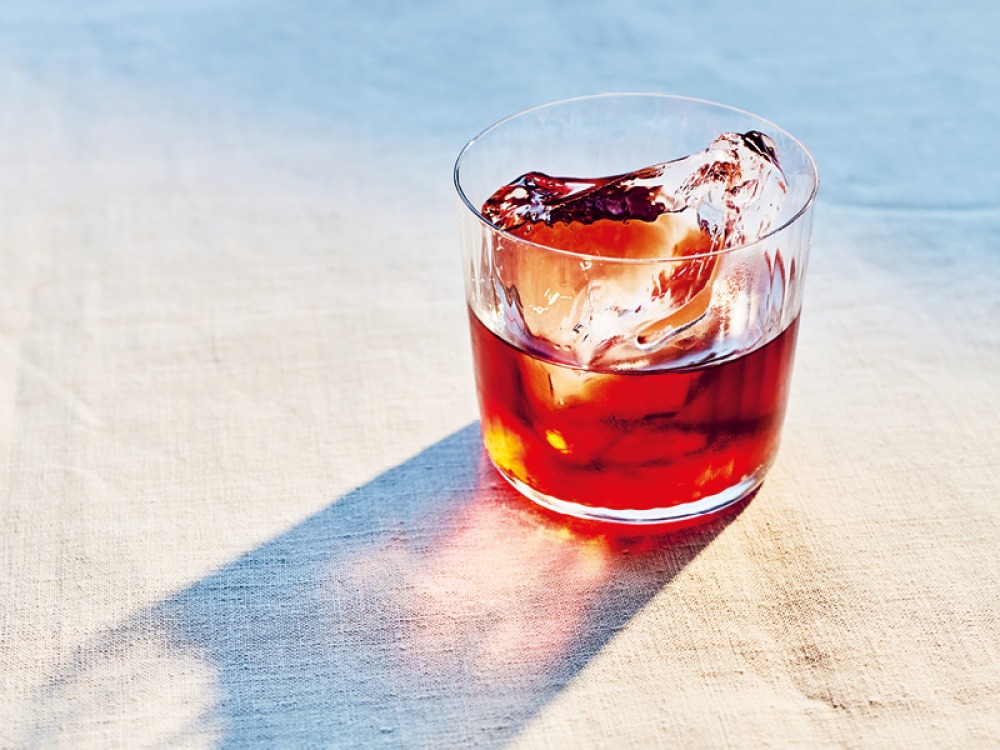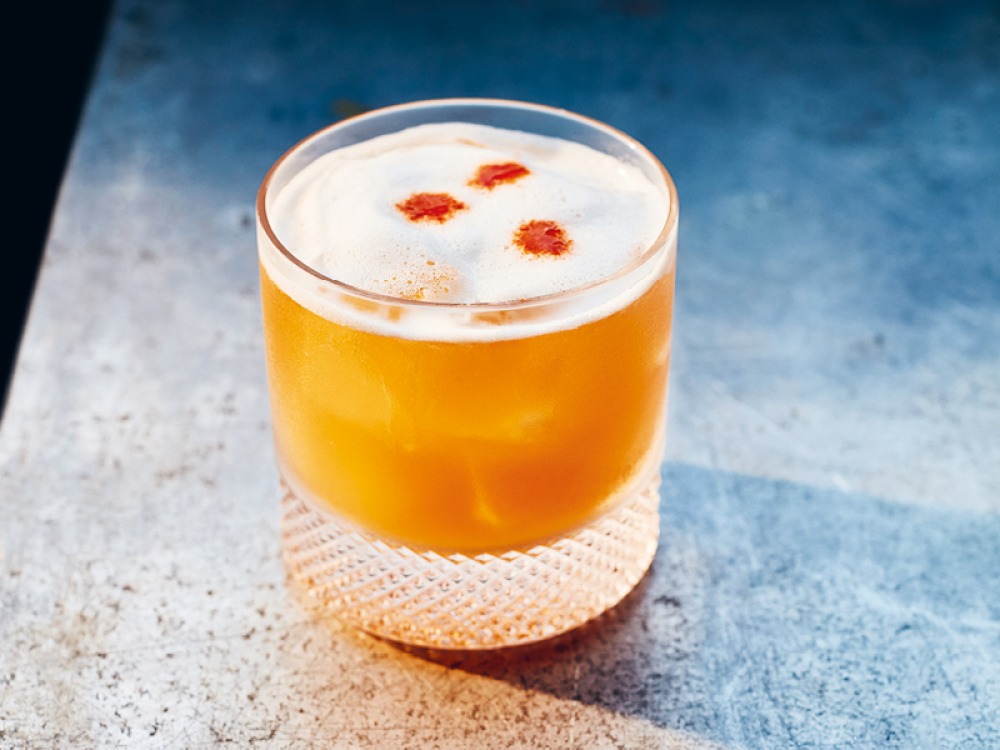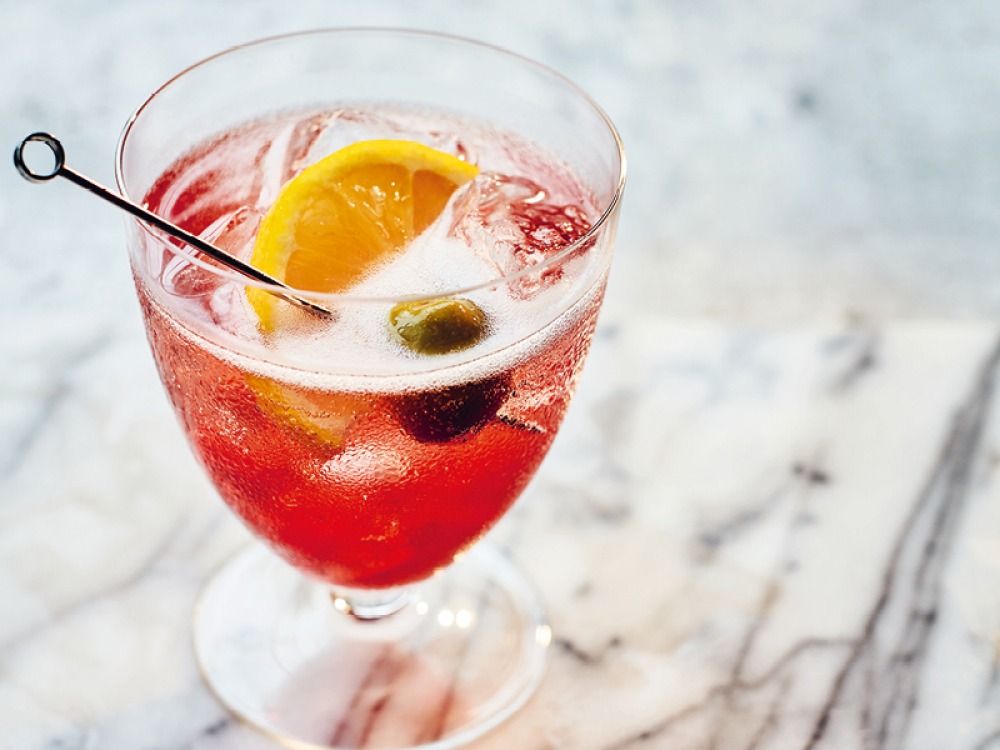
Four Classic Cocktails with a Festive Twist

Here's to a very Merry Christmas

THE NEGRONI
25ml gin
25ml red vermouth
25ml Campari
GLASS: rocks
GARNISH: citrus twist, wedge or wheel
METHOD: stir with ice
The ruby-red Negroni is a beautiful drink – and a wonderfully robust one, too. You can throw one together at high speed, and stir it with a finger, and it will still taste pretty good. Bitter as medicine, and as syrupy-sweet; it’s a taste both kind and cruel. It’s a cocktail that makes your hair stand on end at the same time as it soothes.
The Negroni is part of the aperitivo family – a class of bittersweet, botanical drinks designed to prime the digestion for food. The word aperitivo derives from the Latin for ‘to open’, aperire. It’s a drink of anticipation, not just gastronomically, but socially too – if you’re heading out for an evening of bar-hopping in Milan, there’s nothing like a Negroni to put you in the mood.
I love a recipe that’s equal-parts-everything. And especially one where you can substitute. I rarely negotiate on the Campari, but I’ll often experiment with different gins and vermouths. One of my favourite sundowners is the Negroni Sbagliato – or ‘bungled Negroni’ – which is made with prosecco instead of gin. A Negroni made with tequila or bourbon is also nicer than you might think.
Embedded in the Negroni formula are two more simple but very fine drinks: the Milano Torino (equal parts Campari and vermouth) and the Gin & It (equal parts vermouth and gin). It’s a cocktail that yields endless twists.
If you don’t want a Negroni that knocks you sideways, be sure to stir with lots of ice. Serve in a handsome glass with a fragrant twist or a juicy orange slice.
Read More: The Finest Tipples from Yorkshire to Sip on this Christmas

THE WHISKEY SOUR
50ml bourbon/rye whiskey
25ml lemon juice
12.5ml sugar syrup
1 dash Angostura Bitters
15ml egg white
GLASS: rocks
GARNISH: lemon twist and cherry
METHOD: shake and strain over ice (preferably one large hunk)
Whiskey. Lemon juice. Syrup. Bitters. Raw egg white. It’s an ugly old recipe on paper. But something magic happens to these ingredients when you give them a really hard shake. All the pointy elbows and shrill top notes, the hot alcohols and jangly proteins soften and lengthen and harmonise, and create something utterly new – a pillowy, aromatic sunshine-yellow sour that hits you pleasantly in the solar plexus.
The Whiskey Sour is a drink that can take a lot of sweetness – I like it best with an easy-sipping bourbon. If you find it lacks definition, you can always add more bitters.

THE SPRITZ
75ml sparkling wine
50ml Campari, Aperol or other bitter aperitif
25ml soda water
GLASS: rocks or large wine glass GARNISH: orange or lemon slice and a green olive
METHOD: build over ice
There are many variations on the spritz – what unites them all is the sparkle. That little explosion of bubbles that gives the drink, and the spirits, a lift.
The original spritz was the white wine spritzer – known in the 19th century as the hock and soda. In a poem, Lord Byron declared this combination of sweet German white wine and soda to be his number one hangover cure. With the arrival of Campari in the 1860s, the spritz took a bittersweet turn. Bartenders added prosecco and ice. And by the late 20th century, the modern-day spritz al bitter was born.
The word ‘spritz’ comes from the German word spritzen, which means ‘to spray’. But it’s northern Italy that remains the heartland of spritz drinking today. On a summer evening in Milan or Venice, it’s clinking spritzes on all sides – bright orange Aperol for the Venetians, and red Campari for the Milanese.
The spritz suits spontaneity. I don’t think I’ve ever seen an Italian measure one out. But the 3-2-1 formula – 3 parts prosecco, 2 parts bitter aperitif, 1 part soda – is a good rule of thumb.
This formula is very forgiving and works with all kinds of bittered aperitifs: Suze, Cocchi Americano, Lillet, Cynar, every colour of vermouth. If you don’t have any sparkling wine, just use still white wine and soda.
A spritz is at its most delicious with something salty to eat on the side; some crisps, salami or bruschetta, to whet the appetite. In Venice, spritzes are often served with a green olive actually in the drink – which may sound odd, but turns out to be a total masterstroke.
Read More: Chai Tea Christmas Eggnog

THE MANHATTAN
50ml bourbon/rye whiskey
25ml red vermouth
1 dash Angostura Bitters
5ml syrup from a jar of Luxardo
maraschino cherries (optional)
GLASS: cocktail glass
GARNISH: orange or lemon twist and maraschino cherries
METHOD: stir and strain
No one knows for sure where or when the Manhattan was created – but by the time the 1880s rolled round, it was one of the hottest bar-calls in New York. Back then, it was often embellished with a dash of absinthe or orange curaçao, and a little maraschino liqueur. It’s a simpler cocktail these days, but no less glamorous.
There are three main types of Manhattan: Dry (made exclusively with dry vermouth), Perfect (made with a 50/50 mix of red and dry vermouth) and Sweet (made with red vermouth and a spoonful of maraschino cherry syrup). A Dry Manhattan is so rasping it’s pretty much undrinkable in my view. But a Manhattan on the sweet side is really quite sublime.
The reason you need all that sweetness is to balance the bitterness – because all three ingredients in this drink have a lot of astringent, woody spice. If you’re serving your Manhattan on the rocks – which is another nice way to have it – you’ll almost certainly need that extra bump of sugar, too.
Modern Manhattans are usually seasoned with Angostura Bitters, but back in the late 19th century orange bitters were more widely used. Walnut bitters, chocolate bitters, grapefruit bitters, even a dash of minty Peychaud’s would all bring something interesting to this drink. Half the fun of a Manhattan, of course, is the whiskey-soaked cocktail cherry at the end. So don’t stint on the garnish – put two or three cherries in.
Read More: How to Make the Perfect Festive Espresso Martini
The TEN Cocktail Commandments
1. A GOOD GLASS IS A COLD GLASS: ALWAYS FREEZE OR CHILL YOUR GLASSWARE
2. MEASURE INGREDIENTS ACCURATELY (AT LEAST UNTIL YOU’VE FAMILIARISED YOURSELF WITH THE RECIPE)
3. ENSURE LEMON AND LIME JUICE IS ALWAYS FRESHLY SQUEEZED
4. KEEP MIXERS AND SPARKLING WINES FIZZY AND WELL CHILLED
5. IF IN DOUBT, USE MORE ICE – ALLOW AT LEAST FIVE CUBES PER DRINK
6. SHAKE REALLY HARD; STIR STEADILY AND SLOWLY
7. TASTE AND ADJUST, IF NECESSARY – AND ALWAYS HAVE A LITTLE EXTRA OF YOUR INGREDIENTS ON HAND IN CASE YOU NEED TO TWEAK
8. PRESENTATION IS IMPORTANT – DON’T SKIP THE GARNISH
9. IT’S BETTER TO DO A SIMPLE RECIPE BRILLIANTLY THAN A COMPLICATED ONE POORLY
10. NEVER PUT THE ICE TRAY BACK IN THE FREEZER WITHOUT REFILLING IT FIRST








